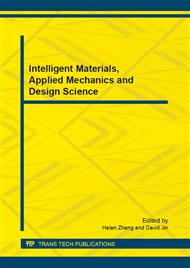p.157
p.161
p.165
p.169
p.175
p.180
p.184
p.188
p.193
Effect of Biological Organic Fertilizer on Plant Growth and Yield of Chinese Kale
Abstract:
A substrate culture experiment was conducted to study the effect of different biological organic fertilizer levels (control: zero fertilization, low level, medium level and high level) on plant growth and yield of Chinese kale (Brassica alboglabra Bailey). Results showed that compared with control, treatments of medium and high fertilization increased the leaf number, plant height, stem diameter, yield and plant dry matter of Chinese kale. Thus they promoted plant growth. The fertilizer utilization ratio of Chinese kale was the lowest for low fertilization treatment, and it was the highest for medium fertilization treatment, while it was decreased for high fertilization treatment. The treatment of medium level fertilization (30g/plant) promoted plant growth and increased the yield of Chinese kale; also it had the highest fertilizer use efficiency. So it was the appropriate organic fertilization amount for Chinese kale production.
Info:
Periodical:
Pages:
175-179
Citation:
Online since:
November 2011
Authors:
Price:
Сopyright:
© 2012 Trans Tech Publications Ltd. All Rights Reserved
Share:
Citation:


